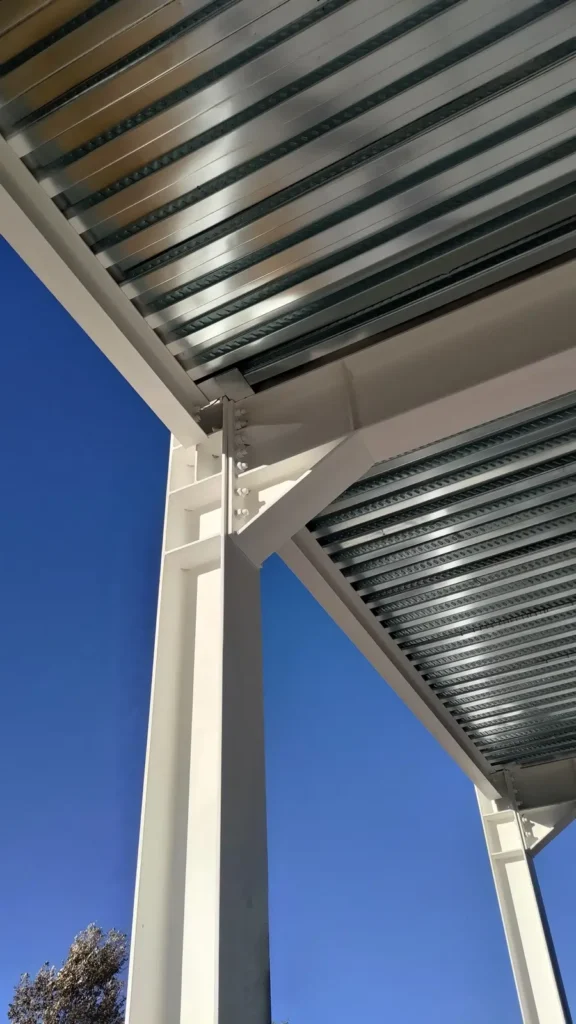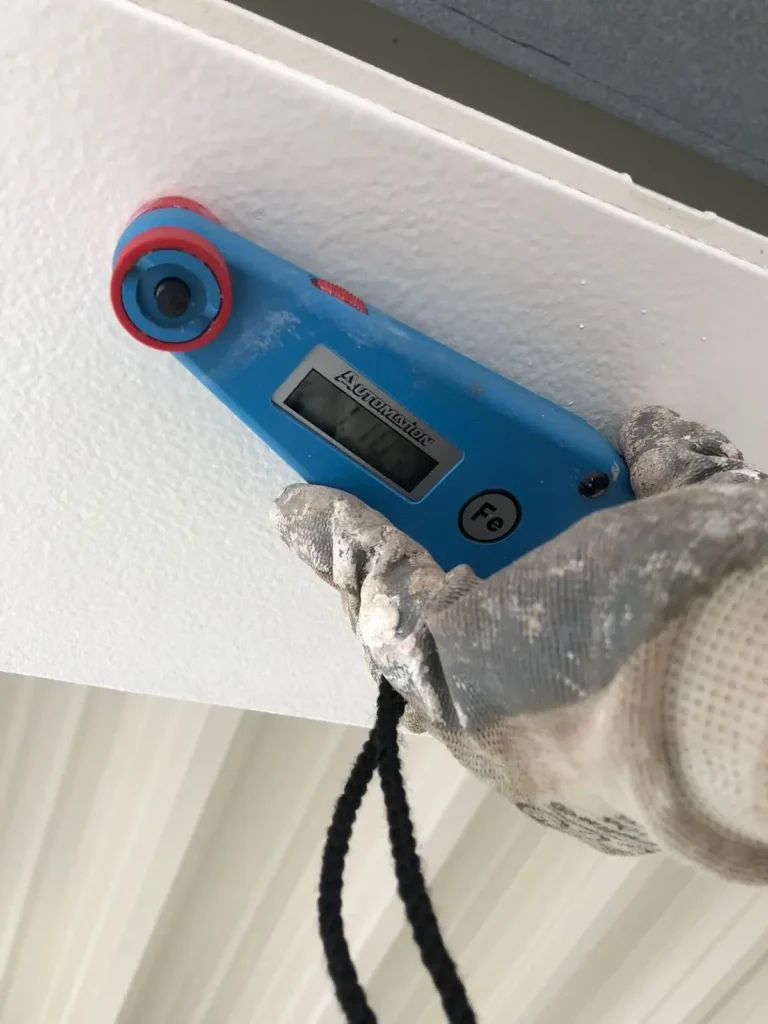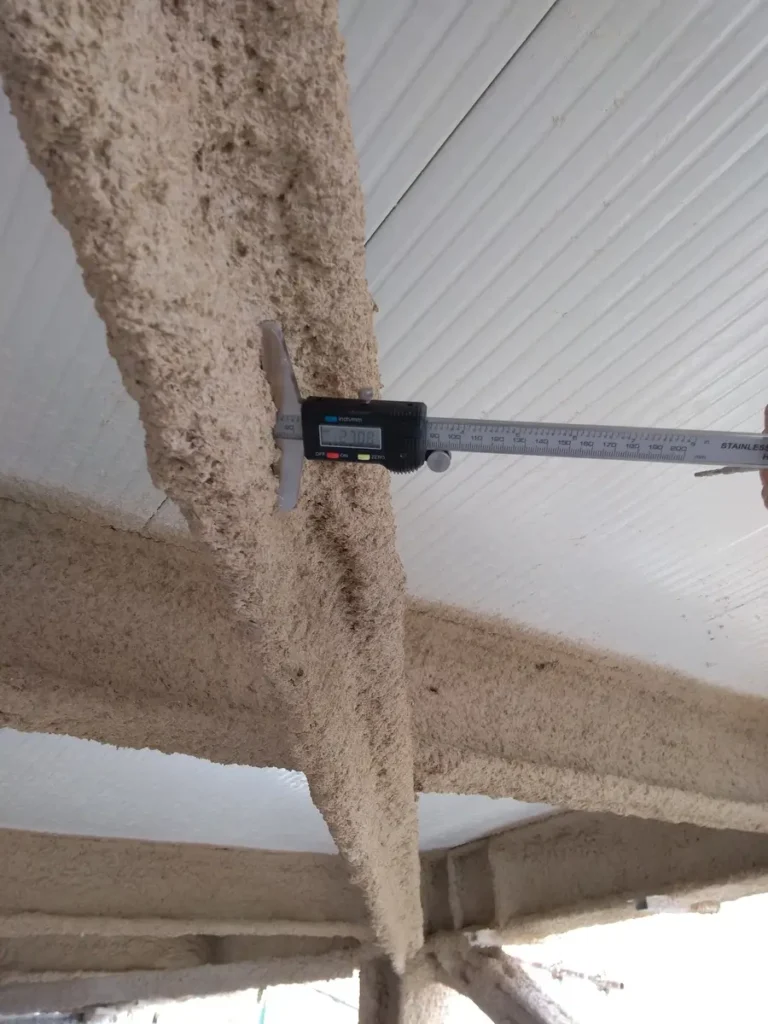Passive fire protection systems in building
Passive fire protection application
The company provides a comprehensive service in the design and implementation of fire protection systems to ensure good standards of fire safety for structures in the event of fire.
Fire resistance of buildings: a definition

According to the definition in paragraph S.2.1 of the Ministerial Decree of August 3, 2015 (Fire Prevention Code), “The purpose of fire resistance is to ensure the structural load-bearing capacity in the fire situation, as well as the ability to compartmentalize, for a minimum time necessary to achieve fire prevention safety objectives.” The fire resistance class is the time interval expressed in minutes, defined by the design specific fire load, during which the fire compartment provides fire resistance. In new buildings or in the redevelopment of existing buildings, we apply passive protective coatings, with insulating layers or slabs, and reactive protective coatings with intumescent paints.
Fire safety is related to steel, wood, reinforced and prestressed concrete structures, floors made of trapezoidal sheet metal and clay block floors.
SDF VERNICIATURE conducts supplier evaluation for the choice of protective treatments, certified according to European standards.
The applicators use suitable equipment, such as airless sprayers and plastering machines, putting their experience and expertise into practice for the proper application of coatings. Passive fire protection systems in public buildings (schools and universities, hospitals, airports, etc.), supermarkets, shopping centers, and industrial plants are applied throughout the country and abroad (Germany, Austria, Switzerland…).
In Switzerland, professional development courses are provided by the Cantonal Association for Fire Insurance.


Fire protection of structural steel and corrugated metal ceiling with intumescent coating
Passive fire protection for structural steel elements for the required firebreak feature (R 30, R 60, R 90, R 120, etc.), according to fire prevention standards. Our company employs intumescent, water-based or solvent-based paints with experimental tests performed according to reactive fire protection systems to the fire resistance of structural steel members EN 13381-8. Fire design is carried out in accordance with EN 1993-1-2- Eurocode 3 “Design of steel structures – General rules – Structural fire design.” The thickness of intumescent paint in order to ensure the required fire resistance is determined according to the mass factor (S/V) and the critical temperature assumed. Fire retardant paints are applied with airless sprayers by high-qualified personnel with suitable experience.
Intumescent fire-retardant paint for wood - Fire performance of wood
Coating systems are made for fire protection of wooden structures and to reduce the fire reaction of wood or wood-derived products. The paint guarantees fire resistance according to European standard ENV 13381-7 and European fire reaction Class B-s1-d0. SDF VERNICIATURE provides protection of wooden structures in schools, school gyms and public buildings in general. Usually in a wooden roof the structure is treated for fire resistance, the non-load bearing board for fire reaction.
How intumescent coatings for fire protection of buildings work
Reactive paints expand by increasing their original thickness upon exposure to heat, thus creating a protective barrier for structures. Intumescent coatings are designed for airless spraying to provide the required firebreak feature depending on fire prevention standards. The fire protection system consists of the following steps: surface preparation, base coat application either via a roller, a brush, or an airless spray, intumescent paint and, where necessary, top coat.
Fire protection of structural elements with insulating plaster
Passive protection of structural elements made of steel, reinforced concrete, corrugated metal or hollow core floor with fire-resistant plaster, usually gypsum-based, with perlite and other special aggregates. Fire-resistant plaster is generally used for structures that do not remain exposed or where there are no special aesthetic requirements. The thickness of the fire-resistant plaster for steel and reinforced concrete structures is determined according to the required fire resistance, critical temperature, section factor for steel, and existing cover for reinforced concrete. The plaster thickness depends on the fire resistance and substrate characteristics. Fire-resistant plaster is applied using plastering machines. In particular structures, such as steel trusses, insulating plaster is applied on flat rib lath. To measure the thickness of the fire-resistant plaster to apply, a mat depth gauge is used.
Fire protection of structural elements with insulating plaster
Fire protection of ordinary and prestressed reinforced concrete beams, columns, floors and walls with intumescent paint or insulating plaster.
Upgrade works of existing ceilings and wall through intumescent paint and insulating plaster
Treatment of existing floors, such as brick floors, hollow core and corrugated metal floors, double tees, and brick ceilings to ensure strength, tightness, and insulation (firebreak features). Painting of non-load-bearing walls, such as brick walls, lightweight concrete block walls and gypsum board walls to ensure tightness and insulation.
Fireproof walls and false ceilings construction and walls and slab floor upgrade
Construction of walls, wall linings, ceilings and cladding with calcium silicate or gypsum plasterboard slabs.
Climatic conditions check and paint thicknesses
The protective coating is applied by monitoring the environmental conditions (before, during and after the coating application), with suitable measuring instruments such as a dew point digital thermo-hygrometer to detect air temperature, humidity and dew point digital contact thermometer to monitor the steel substrate. The measuring instruments used to measure paint thickness are: a wet film comb to check wet paint thickness and a coating thickness gauge to detect dry paint thickness.
Understanding reaction to fire
According to the definition in paragraph S.1.1 of the Ministerial Decree of August 3, 2015 (Fire Prevention Code), “Reaction to fire is a passive protection fire prevention measure that expresses its main effects in the fire’s initial phase, with the objective of limiting the ignition of materials and the spread of the fire. This refers to the behavior of materials exposed to fire, with particular regard to their performance under standardized test conditions.” Therefore, reaction to fire concerns combustibility and flammability of a material and its contribution to fire development and spread. The reaction-to-fire class is the degree of participation of a material (or product) in the fire to which it is subjected.
Do you need a complete design, implementation and certification service for passive fire protection systems?
The close collaboration between qualified external professionals and company personnel (technicians with experience and expertise in the fire protection field and highly specialized applicators) allow SDF VERNICIATURE to provide an outstanding customer experience: identification of the most appropriate passive fire protection system, evaluation of the coating thicknesses to be adopted in order to ensure the required fire resistance, application of the protective system, verification of the protection achieved, and final fire certification.
Fire design is carried out in compliance with the Ministerial Decree August 3, 2015 (Fire Prevention Code). The certification is issued by professionals in possession of the requirements of Legislative Decree 139/2006 Article 16 paragraph 4, based on the Fire Department forms: for FIRE RESISTANCE Certification CERT.REI, Declaration inherent in the products used DICH.PROD, Report of verification of resistance for structural elements, for FIRE REACTION Declaration inherent in the products used.


